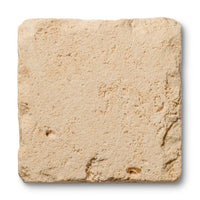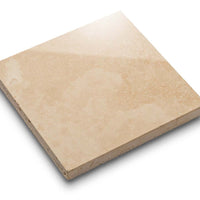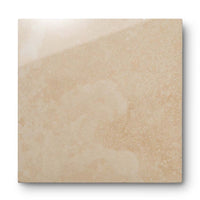A History Of Ceramic Tile In The Western World

Ceramic tiles have an enriching history. It continues to be the most popular and fundamental material for practical and decorative purposes. This blog examines how it has changed through the centuries.
Ceramic tile decorates the world’s greatest landmarks, churches, and buildings. Molded from natural elements like sand and clay – it delivers a wealth of color and shapes for interior and exterior design.
The beginnings date back to early recorded civilizations from Egypt, Rome, and Babylon. The functionality of durable clay tiles and bricks during that time transcended beyond their beauty. Regional decorations and styles attracted attention while emanating power and control to neighboring countries or enemies.
Ceramic technology expanded and improved as time progressed. Various civilizations began adding local materials for walls and flooring instead of solely using clay. That includes cement, glass, and natural stone.
The earliest recorded example of ceramic tile was found in the Step Pyramid of Djoser at Saqqara in Egypt (2668 BCE). Hand-painted tiles decorated the grand walls and doorways of the tomb.
Early civilizations also used a combination of glazed bricks to build up their cities and fortified gates. Although ceramic building materials differ significantly from today’s tiles, the durability of the simplest compositions has survived for thousands of years.

Handcrafted geometric and inlaid designs floored first millennium churches and outdoor spaces across the west. The Church of Hagia Sophia in Istanbul and the Cathedral and Abbey Church of St. Alban in England had exquisite inlaid flooring. As creation methods became more consistent for ceramic tiles during this period, more unique designs emerged.
Chinese and Islamic regions introduced new techniques to the western world. Trading throughout Asia brought about the development of porcelain-like tiles.
Porcelain was first made in China during the 600s but gained traction in the west during the late Yuan Dynasty. The Chinese used grounded stone and mixed it with white clay to create the base of tile material.
As Europeans attempted to imitate Chinese techniques, they developed tin-glazing, the process of coating an opaque layer of ceramic glaze on clay. Artisans then applied brighter colors with a similar decorative accent, allowing for beautiful interior and exterior designs on ceramic tile.
In the Middle East, potters added quartz into their clay—hints of earth’s gems stood out beneath thick transparent glaze. One of the most influential pieces of architecture in the 16th century was the Sokollu Mehmed Pasha Mosque in Istanbul. Architect Mimar Sinan designed the mosque using bright, colorful tiles of blue and white.
Compared to porcelain, ceramic tiles were best for those in warmer locations. Porcelain tiles, a denser building material, retain more heat. Though both look similar, they differ in composition, manufacturing processes, durability, water resistance, and cost.

At the turn of the 20th century, ceramic tiles remained a popular choice in residential and commercial spaces. Today you’ll come across three main types: glazed, floor, and wall tiles.
Glazed ceramic tiles
Coated with a protective matte (suitable for stone) or glossy finish (for a more polished look).
Floor tiles
Generally have a matte finish, increasing durability for floor installation.
Wall Tiles
Glossy finishes are best for backsplashes, accent walls, and showers.
Ceramics still carry on the old handmade traditions, including kiln firing, having a clay composition, and more. We continue to see regionally influenced decorative and mosaic tile designs from Hexagon, Byzantine, Herringbone to Galileo. New collections add a contemporary spin that brings fresh energy to any space.
Please note: comments must be approved before they are published.
* indicates a required field
Our finishes are applied by hand, ensuring that each element of your order matches and blends together well. In some instances, you may notice a natural variation in the application of the finish. This is normal and should be expected with a handmade item.













